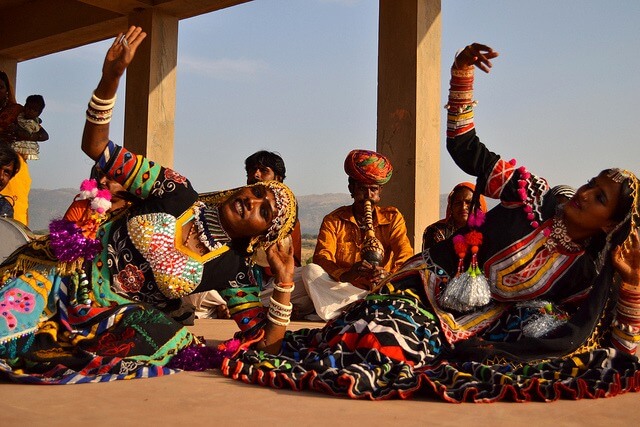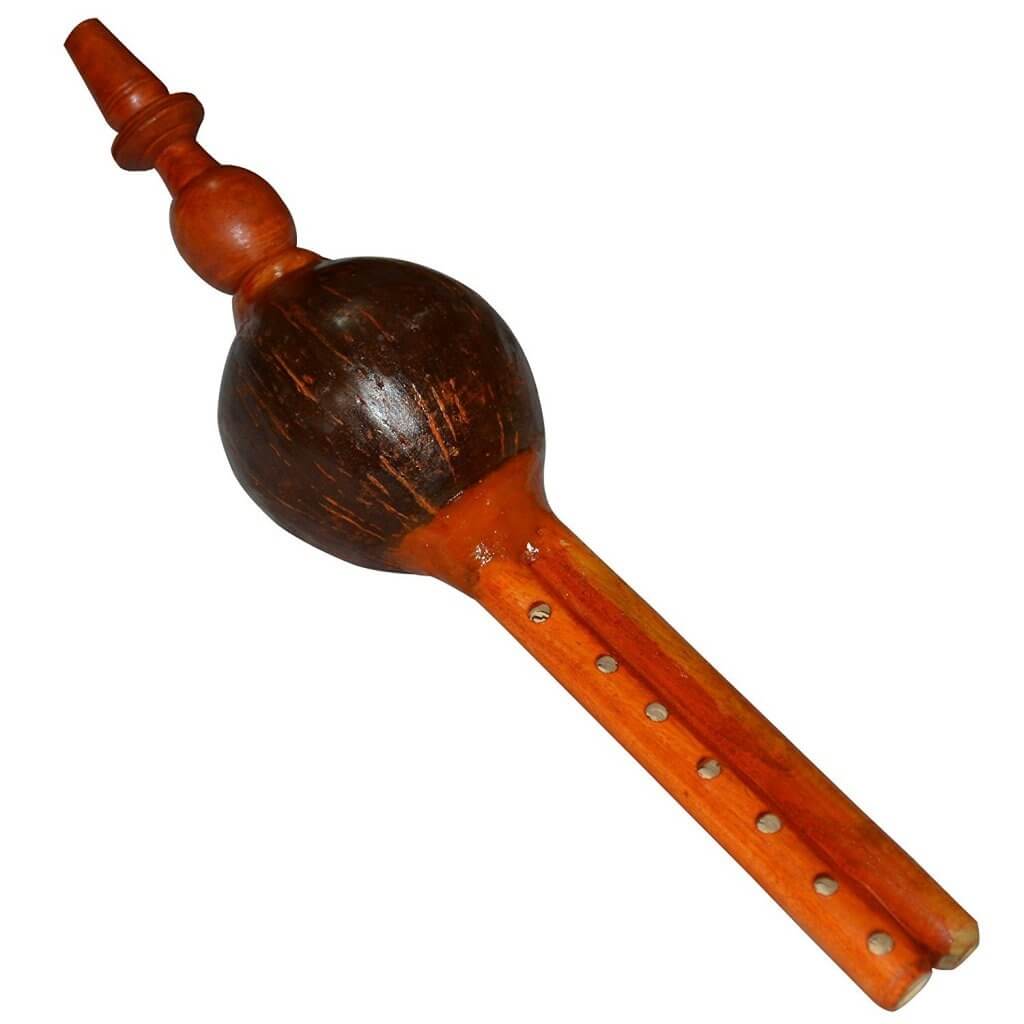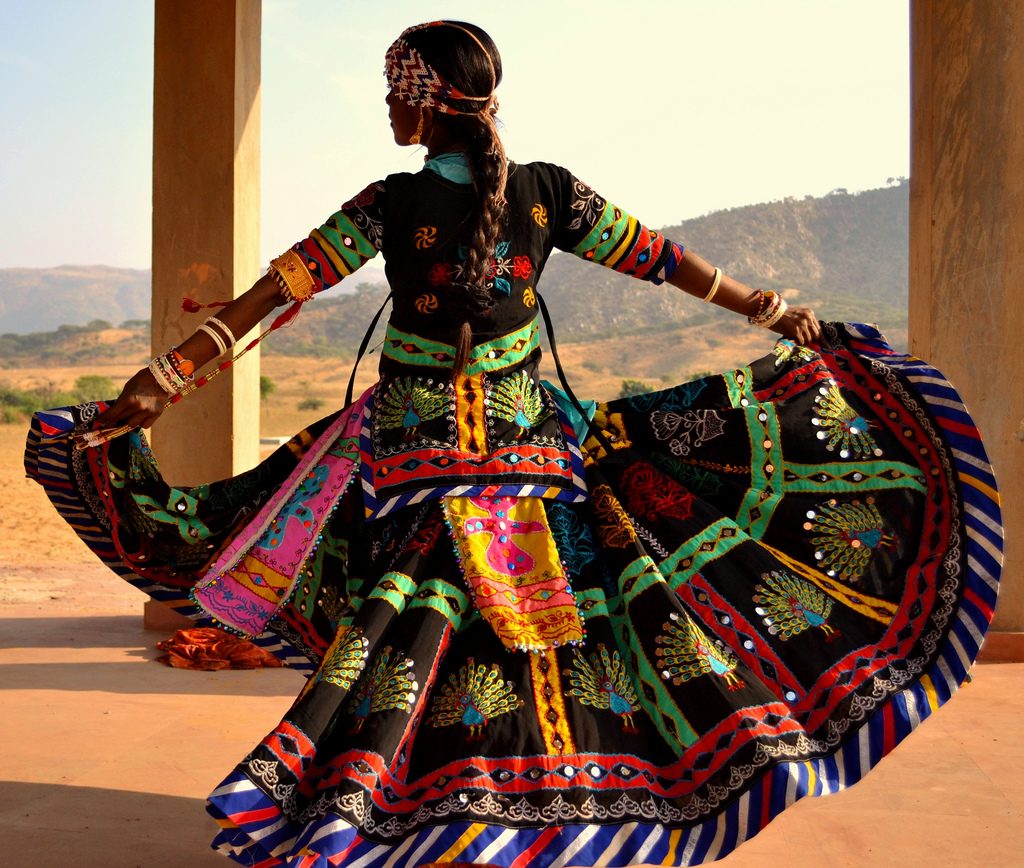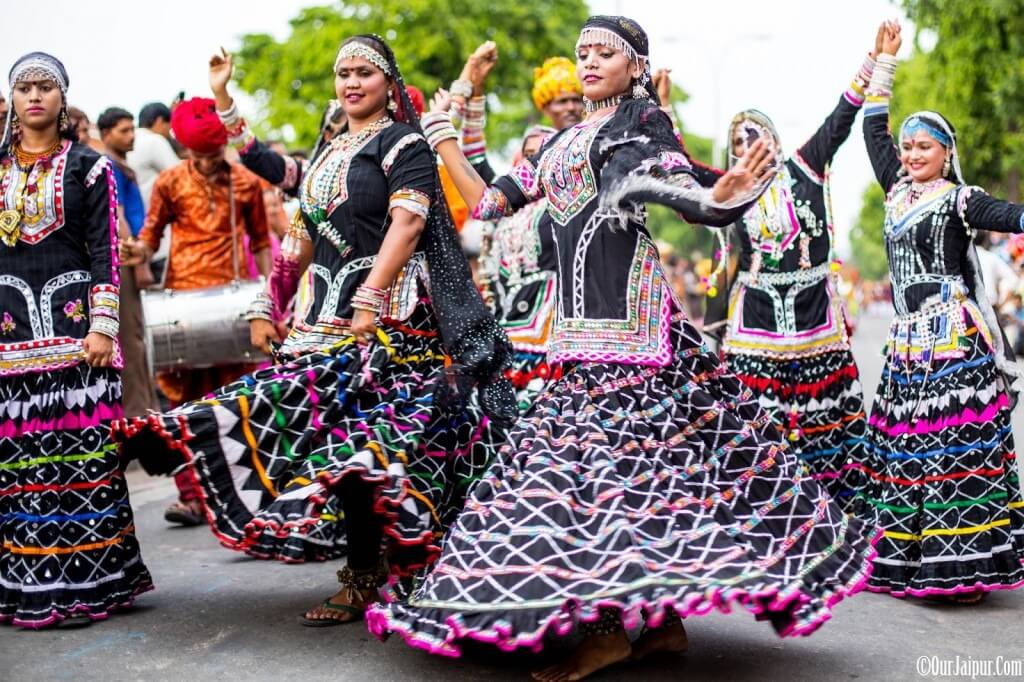Rajasthani Kalbelia Dance
Rajasthani Kalbelia Dance is very awesome art. Kalbelia is a traditional Rajasthani dance form performed by the indigenous Kalbelia tribe of Rajasthan. From time immemorial, the people of the tribe undertook snake catching as a profession and specialized in trading snake venom.
After the Wildlife Act was passed in the year 1972, they had to unwillingly stop this activity. Today, performing this art form is a major source of income for them.
However, the opportunities are infrequent and many members of the community work indulge in agricultural activities to sustain their livelihood.

The dance form is solely performed by the female members of the community, while the male members play the instruments.
Traditional Indian instruments such as the pakhwaja, the dholak, jhanjhar, sarangi are used to render music during the performances. But the most common instrument is been that has been popularly associated with snake charming.

The performers wear an Angrakhi on their upper body whose sleeves can either be half length or full length while their head is covered by an Odhani.
They also wear a long skirt on their lower body which is called a Lehenga or a Ghagra that enables them to sway gracefully during the performance. The whole dress is essentially black in colour with red decorative laces. It also employs silver thread that is sewed in an assortment of patterns on the black dress.
This makes the dress resemble a black snake that has white spots or stripes more closely. It also features a lot of colourful patters and designs along with mirror work that help the dancer attract the attention of the audience. Kalbelia dancers prefer to wear traditional jewelry during their performances.

The female performers dance and twirl replicating the movements of a serpent. During the course of the performance, the tempo increases and as a result, the dance steps are performed at a faster rate.
The dancers are often subjected to fatigue. Usually, the dance form is performed in pairs with at least two pairs who swap stage-presence seamlessly.
This arrangement enables one half of the group to relax while at the same time does not alter the mood of the audience.
There are no dance schools that teach this dance form. The folk art is passed down from generation to generation.
The dance form received a major boost when it was inducted into the Intangible Heritage List released by the UNESCO in the year 2010.



